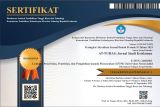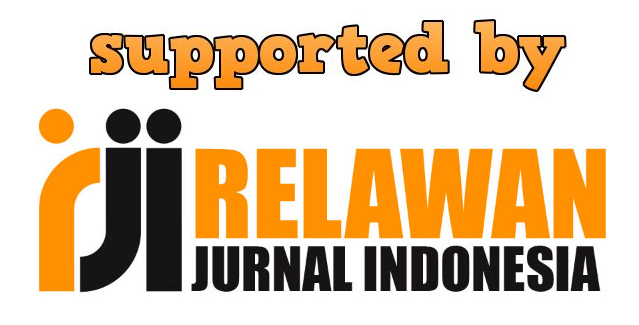Adeliani, N. (2015). Lagu Menidurkan Anak Pada Masyarakat Banjar: Kajian Bentuk, Makna, dan Fungsi. Al-Banjari : Jurnal Ilmiah Ilmu-Ilmu Keislaman, 13(2). https://doi.org/10.18592/al-banjari.v13i2.403
Ahmad, A., Ali, Z., Syamsuddin, T., & Ajies, A. M. M. (1983). Sastra Lisan Aceh. Departemen Pendidikan dan Kebudayaan.
Al Khalidi, M. W., & Syam, H. M. (2017). Representasi Nilai-Nilai Moral Dalam Lirik Lagu Doda Idi (Studi Semiotik Terhadap Lirik Lagu Doda Idi Dalam Album Nyawoung). Jurnal Ilmiah Mahasiswa Fakultas Ilmu Sosial & Ilmu Politik, 2(4), 417–428.
Alafanta, M., & Iqbal, M. (2019). Analisis Nilai Religius Dalam Syair Peuayôn Aneuk Di Kecamatan Setia Bakti Kabupaten Aceh Jaya. JIM Pendidikan Bahasa dan Sastra Indonesia, 4(3), 37–45.
Aoulia, B. R. P. (2024). Peran Bahasa Aceh Dalam Mempertahankan Identitas Budaya di Era Globalisasi. Jurnal Society: Pengamat Perubahan Sosial, 4(2), 85–96. https://doi.org/10.35308/jspps.v4i2.10903
Asnelida, C., Yusuf, Y., & Armia, A. (2017). Tradisi Lisan Aceh Di Kecamatan Manggeng Kabupaten Aceh Barat Daya. JIM Pendidikan Bahasa dan Sastra Indonesia, 2(3), 326–337.
Aulia, S., & Agustin, H. Y. (2020). Nilai Ketekunan Pada Tradisi Dindang Kepada Anak Pada Masyarakat Banjar. Martabat: Jurnal Perempuan dan Anak, 4(1). https://doi.org/dx.doi.org/1021274/martabat.2020.4.1.65-78
Bakri, S. (2016). Modernisasi dan Perubahan Sosial dalam Lintasan Sejarah Islam. KALIMAH, 14(2), 173. https://doi.org/10.21111/klm.v14i2.611
Diana, N., & Nurjana, N. (2020). Pesan Dakwah dalam Adat Peutron Aneuk. AL MUNIR: Jurnal Komunikasi Dan Penyiaran Islam, 39–47. https://doi.org/10.15548/amj-kpi.v0i0.1495
Doubleday, V. (2023). Spiritual and Emotional Dimensions of Female Lullaby Singing in Afghanistan. In Ethnomusicology and its Intimacies Essays in Honour of John Baily. Routledge.
Efendi, J. (2018). Strategi Majelis Adat Aceh (Maa) Dalam Melestarikan Budaya Aceh. Al-Idarah: Jurnal Manajemen dan Administrasi Islam, 2(2), 147. https://doi.org/10.22373/al-idarah.v2i2.4422
Fuadi, T. M., Musriadi, R., Usman, U., & Farissi, S. (2019). Dodaidi: Budaya Mengayunkan Anak Dalam Masyarakat Aceh (Perspektif Filsafat Pendidikan Ki Hadjar Dewantara). Pencerahan, 13(1), 79–96.
Furqan, T. N., Maimun, M., & Helmi, H. (2019). Pelestarian Seni Tutur Di Aceh Ditinjau Dari Perspektif Teori Kebijakan Publik (Studi Di Balai Pelestarian Nilai Budaya Aceh). Jurnal Ilmiah Mahasiswa FISIP Unsyiah, 4(4).
Giudice, L. D. (1988). Ninna-nanna-nonsense? Fears, Dreams, and Falling in the Italian Lullaby. Journal Oral Tradition, 3(3), 270–293.
Harun, M. (2012). Pengantar Sastra Aceh. Citapustaka Media Perintis.
Hatuwe, R. S. M., Tuasalamony, K., Masniati, A., & Yusuf, S. (2021). Modernisasi Terhadap Perubahan Sosial Masyarakat Desa Namlea Kabupaten Buru. Nusantara: Jurnal Ilmu Pengetahuan Sosial, 8(1), 84–96. http://dx.doi.org/10.31604/jips.v8i1
Heni, R., Aini, Z., & Fitri, M. (2023). Peran Wanita Karir Terhadap Pola Pengasuhan Anak. Saree: Research in Gender Studies, 5(1), 53–70. https://doi.org/10.47766/saree.v5i1.1785
Hermaliza, E., Harvina, H., Khaira, N., Liyansyah, M., & Wibowo, A. B. (2014). Seudati di Aceh. Balai Pelestarian Nilai Budaya Banda Aceh.
Hutomo, S. S. (1991). Mutiara Yang Terlupakan Pengantar Studi Sastra Lisan. Himpunan Sarjana Kesusastraan Indonesia Hiski - Komisariat Jawa Timur.
Ibrahim, A. (2022). Pendidikan Karakter Anak Melalui Tradisi Dodaidi di Aceh. ABNA: Journal ofi Islamic Early Chilhood Education, 3(1), 20–30. https://doi.org/10.22515/abna.v3i1.5224
Ibrahim, M., Ali, A. H., Kasim, H., Sufi, R., & Jalil, H. (1985). Perobahan Pola Kehidupan Masyarakat Akibat Pertumbuhan Industri Di Daerah Propinsi Daerah Istimewa Aceh. Departemen Pendidikan Dan Kebudayaan Proyek Inventarisasi Dan Pembinaan Nilai-Nilai Budaya.
Idawati, I., Anwar, A., Fitriah, L., & Pramudya, A. (2023). Nyanyian Onduo Dalam Masyarakat Pasir Pengaraian, Dalam Perspektif Fungsi Manifes Dan Laten. Perspektif Pendidikan dan Keguruan, 14(1), 65–74. https://doi.org/10.25299/perspektif.2023.vol14(1).12028
Inayatillah, I. (2017). Doda-Idi and Indigenous Knowledge: Children Character Building Through the Acehnese Spoken Arts. Advanced Science Letters, 23(3), 2071–2074. https://doi.org/10.1166/asl.2017.8560
Istiyati, S., Nuzuliana, R., & Shalihah, M. (2020). Gambaran Peran Ayah dalam Pengasuhan. Profesi (Profesional Islam) : Media Publikasi Penelitian, 17(2), 12–19. https://doi.org/10.26576/profesi.v17i2.22
Kana, R. P., Harahap, R., & Wuriyani, E. P. (2022). Tradisi Lisan Aceh dalam Intat Linto (Antar Pengantin): Pantun Seumapa. Sintaks: Jurnal Bahasa & Sastra Indonesia, 2(1), 124–130. https://doi.org/10.57251/sin.v2i1.365
Kennedy, H. P., Gardiner, A., Gay, C., & Lee, K. A. (2007). Negotiating Sleep: A Qualitative Study of New Mothers. Journal of Perinatal & Neonatal Nursing, 21(2), 114–122. https://doi.org/10.1097/01.JPN.0000270628.51122.1d
Laineste, L., Brzozowska, D., & Chlopicki, W. (2013). Estonia and Poland: Creativity and tradition in cultural communication (Vol. 2). ELM Scholarly Press. https://doi.org/10.7592/EP.2
Lerner, D. (1964). THE PASSING OF TRADITIONAL SOCIETY: Modernizing The Middle East. The Free Press.
Lubis, T. (2019). Tradisi Lisan Nandong Simeulue: Pendekatan Antropolinguistik [Disertasi]. Universitas Sumatera Utara.
MacKinlay, E., & Baker, F. (2005). Nurturing Herself, Nurturing Her Baby: Creating Positive Experiences for First-time Mothers through Lullaby Singing. Women and Music: A Journal of Gender and Culture, 9(1), 69–89. https://doi.org/10.1353/wam.2005.0010
Miles, M. B., & Huberman, A. M. (1994). An Expanded Sorcebook Qualitative Data Analysis. Sage Publications.
Muhaini, M., & Nasir, Mohd. (2020). Doda Idi Poem And Transmission Of Ethno-Nationalism Spirit In The Aceh Community. Journal of Contemporary Islam and Muslim Societies, 4(1), 58. https://doi.org/10.30821/jcims.v4i1.5893
Muhammad, M., Rahman, A., Hasan, D., Widarny, E., & Darwis, D. (1994). Dampak Globalisasi Informasi Dan Komunikasi Terhadap Kehidupan Sosial Budaya Masyarakat Dl Daerah Istimewa Aceh. Depdikbud Daerah Istimewa Aceh.
Munawwarah, M., & Astuti, S. (2019). Early Childhood Character Education Practices Based On Local Wisdom In Aceh: Challenges And Efforts Made In Globalization Era. Gender Equality: International Journal of Child and Gender Studies, 5(2), 71. https://doi.org/10.22373/equality.v5i2.5598
Ngafifi, M. (2014). Kemajuan Teknologi Dan Pola Hidup Manusia Dalam Perspektif Sosial Budaya. Jurnal Pembangunan Pendidikan: Fondasi dan Aplikasi, 2(1). https://doi.org/10.21831/jppfa.v2i1.2616
Nirmala, D., & Rudiyanto, R. (2023). “Mbue-mbue” Tradisi Menidurkan Anak dalam Pengasuhan Masyarakat Muna. Edukids: Jurnal Pertumbuhan, Perkembangan, dan Pendidikan Anak Usia Dini, 20(2), 116–122. https://doi.org/10.17509/edukids.v20i2.61229
Ntuli, C. D. D. (2013). Children’s oral poetry: A reflection on the role of Imilolozelo (lullabies) as Art Performance in Zulu. Muziki, 10(sup1), 13–23. https://doi.org/10.1080/18125980.2013.852739
Pratiwy, D. (2021). Cultural Norm Configurations in Acehnese Lullaby. International Journal of English and Applied Linguistics (IJEAL), 1(3), 178–186. https://doi.org/10.47709/ijeal.v1i3.1215
Primadata, A. P., & Biroli, A. (2020). Tradisi Lisan: Perkembangan Mendongeng Kepada Anak Di Era Modern. Prosiding Seminar Nasionalpekan Chairil Anwar, 1, 496=505. https://jurnal.unej.ac.id/index.php/prosiding/issue/view/1031
Rahadian, A. S., Pradipta, L., & Fitranita, F. (2022). The Significance of Mothers’ Voice at Household Level: A Decision-making Process to Increase the Health Status of Mothers and Babies: 2nd World Conference on Gender Studies (WCGS 2021), Malang, Indonesia. https://doi.org/10.2991/assehr.k.220304.031
Rahayu, S., & Herwina, H. (2022). Pengembangan Model Parenting Berbasis Manjujai. Jambura Early Childhood Education Journal, 4(2), 195–206. https://doi.org/10.37411/jecej.v4i2.1420
Ritzer, G. (2010). Globalization: A basic text. Wiley-Blackwell.
Rosana, E. (2015). Modernisasi Dalam Perspektif Perubahan Sosial. Al-Adyan: Jurnal Studi Lintas Agama, 10(1), 67–82. http://dx.doi.org/10.24042/ajsla.v10i1.1423
Sarah, S., Hartati, T., & Ismawan, I. (2019). Tradisi Berbalas Pantun Dalam Adat Perkawinan Masyarakat Aceh Tamiang “Dilema Keutuhan Dan Keberlanjutannya.” Jurnal Ilmiah Mahasiswa Program Studi Pendidikan Seni Drama, Tari dan Musik, 4(1), 97–106.
Siegel, J. T. (1969). The Rope of God. University of California Press.
Suroyo, S. (2022). Tradisi Nandung Sebagai Pembentukan Karakter Pada Masyarakat Rengat Indragiri Hulu Riau. An-Nas, 6(1), 1–13. https://doi.org/10.36840/annas.v6i1.557
Sutrisno, I. H., Akob, B., Navia, Z. I., Nuraini, N., & Suwardi, A. B. (2020). Documentation of ritual plants used among the Aceh tribe in Peureulak, East Aceh District, Indonesia. Biodiversitas Journal of Biological Diversity, 21(11). https://doi.org/10.13057/biodiv/d211102
Syamsuddin, T., Husin, T. A. H., Abbas, M. N., Sulaiman, M. I., & Umar, R. (1977). Adat Istiadat Daerah Propinsi Aceh. Proyek Penelitian Dan Pencatatan Kebudayaan Daerah.
We, A. Y., & Fauziah, P. Y. (2020). Tradisi Kearifan Lokal Minangkabau “Manjujai” untuk Stimulasi Perkembangan Anak Usia Dini. Jurnal Obsesi : Jurnal Pendidikan Anak Usia Dini, 5(2), 1339–1351. https://doi.org/10.31004/obsesi.v5i2.660
Weiner, M. (1984). Modernisasi Dinamika Pertumbuhan. Gadjah Mada University Press.
 (Universitas Islam Negeri Ar-Raniry Banda Aceh)
(Universitas Islam Negeri Ar-Raniry Banda Aceh) 




.png)






